Meditation is now a practice well known across the globe. However, you may not know that there are many different types of meditation and many reasons why someone may follow this practice.
Meditation is mainly seen as a mental health tool in the western world. Many people start a meditation practice to help them de-stress and pause from their fast-paced, busy lifestyles. Other people may use meditation for something more specific, such as to help them sleep, build focus, or help them mentally prepare for an important event.
While the vast mental benefits of meditation are magnificent, the western style lacks the spiritual element that the traditional “eastern” kind of meditation contains.
So if you’re intrigued by the power of meditation and are wondering how it can affect you more profoundly, you’ll surely be interested to learn about spiritual meditation. Read on to learn what spiritual meditation is and how to practice it.
Contents
- 1 What is spiritual meditation?
- 2 Benefits of a spiritual meditation practice
- 3 How to practice spiritual meditation
- 4 What is the best spiritual meditation technique for beginners?
- 5 What is the best spiritual meditation technique for experienced meditators?
- 6 How do you feel after spiritual meditation practice?
- 7 Tips for a successful meditation practice
- 8 Final thoughts on spiritual meditation
What is spiritual meditation?
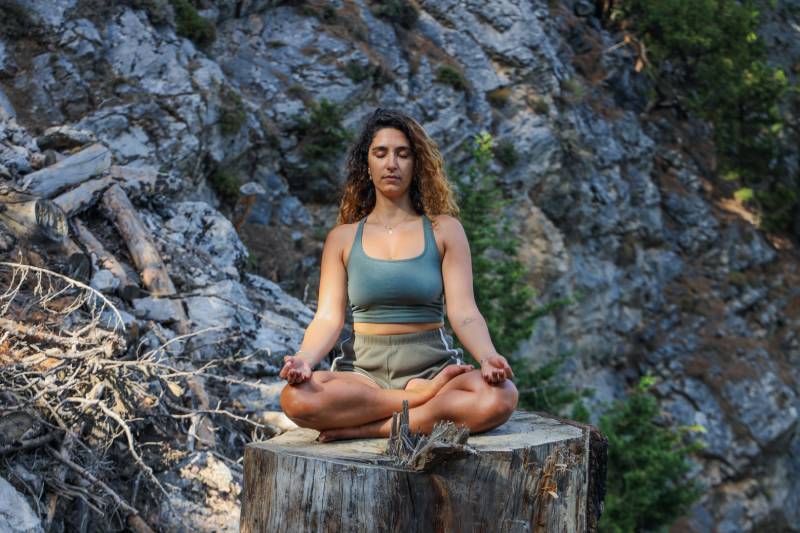
Spiritual meditation is a practice that helps you cultivate a deeper understanding of yourself and the universe. Spiritual Meditation focuses on self-realization, the knowledge that everything in the universe around us, including ourselves, is pure consciousness coming from the same source.
The spiritual practice connects us to the eternal truth, which helps us break free from the ego’s restraints and experience more inner peace and joy. Spiritual Meditation has many benefits for the mind and soul, but the primary purpose and goal is spiritual awakening.
Spiritual meditation is a broad term as it has roots in many major religious traditions, such as Buddhism and Hinduism. Therefore, the meditation practice found in each religion differs as it is based on those specific teaching and beliefs.
Still, it’s important to note that you do not need to follow a religion or even see yourself as religious to practice spiritual meditation. Spirituality is different from religion as you can believe in the existence of something greater than you and seek connection with it without following any specific religion.
What is the difference between spirituality and meditation?
Spirituality is the recognition and belief that there is something greater than you. Practicing spirituality means seeking a deeper connection with the higher consciousness you believe in. Meditation is a practice that helps you advance in the stages of your spiritual journey.
Therefore, spirituality and meditation are not the same, but they go hand in hand. Spirituality is a path, and meditation is a practice that can help you move further along that path toward spiritual enlightenment.
What is the difference between spiritual meditation and mindfulness meditation?
One of the main differences between spiritual meditation and mindfulness meditation is the goal. As we mentioned, the purpose of spiritual meditation is to reach spiritual enlightenment. However, mindfulness meditation aims to gain more awareness of the present moment.
In mindfulness meditation, you focus on connecting to your breath and bodily sensations while observing things you can sense around you. The spiritual meditation technique may involve working with the energetic body or cultivating particular qualities like kindness and forgiveness to move closer to inner bliss and spiritual awakening.
Furthermore, the benefits of mindfulness meditation are predominately mental, such as reduced stress and anxiety and increased focus and clarity. While prolonged mindfulness meditation may lead the practitioner to experience spiritual benefits like a deeper connection to nature, the practice is generally focused on the mind.
Spiritual advancement is the main focus of spiritual meditation, as the techniques help you move closer to the universe/divine/higher consciousness. Still, like all forms of meditation, it comes with plenty of mental and even physical benefits, which we will discuss in more detail below.
Benefits of a spiritual meditation practice
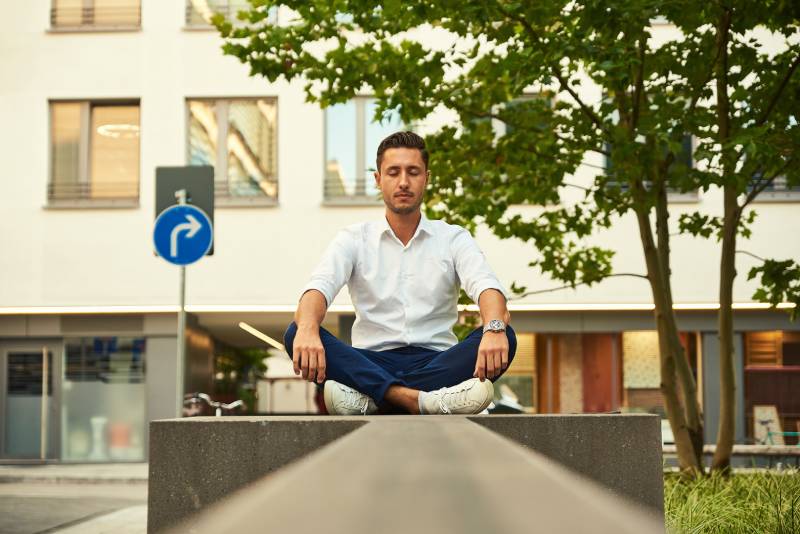
Here are some of the top mental and spiritual benefits you may experience with a daily meditation practice.
- It calms the nervous system – Spiritual meditation releases mental tension and helps your body unwind, signaling your muscles to relax completely. This prompts the “parasympathetic response in the nervous system, turning on the “rest and digest” mode, which allows our bodies and souls to recover, heal, and replenish.
- It helps us react better to stressors – When we realize that there is something much bigger than ourselves, we stop acting as if the world revolves around us. Along with the de-stressing effects, this makes us see things differently. Things that significantly stressed us out in the past, like sitting in traffic, no longer appear as a problem. And for those things we still perceive as a problem, they do not trigger us like before. This is because spiritual meditation helps us to maintain a constant sense of inner bliss regardless of the outer circumstances.
- It helps you tap into your creative potential – Spiritual meditation quiets the thoughts and takes our attention away from the physical, directing it to higher realms. As a result, you may find that new ideas seep into your consciousness during or after your practice.
- It helps you let go of the past – As we connect to ourselves through spiritual meditation, we become aware of things in the past we are holding onto. Holding onto past trauma keeps us on a low vibration, preventing us from moving forwards. However, as meditation teaches us that we are not our past experiences, emotions, or thoughts, we can let go of past hurts and find solace.
- It helps you break through limiting beliefs and negative thought patterns – The separation between the true self and the mind allows us to step outside our mind and see our thoughts and ideas from a different perspective. By doing this, we can detach from them and release any negative thought patterns or beliefs that we’re keeping us from reaching our potential.
- It increases feelings of kindness and compassion – Spiritual meditation can wake us up to unhealthy or harmful habits and actions we are doing. The spiritual awareness we gain from meditation practices like Metta meditation motivates us to live with more love, kindness, and compassion for ourselves and others.
- It encourages you to reach your highest potential – The spiritual path is transformative. The more you meditate, the more you get to know your most authentic self. This can help you uncover your life purpose and inspire you to start living it.
- It gives you more self-acceptance and self-belief – Spiritual meditation doesn’t only open our eyes to our potential. It also empowers us, giving us the belief that we can reach it. This is because when we sit down to meditate, we meet our true, most authentic selves and make friends with them. We see the good and the bad, but because we know the nature of the universe, that good and evil coincide, we can accept and embrace every part of ourselves.
How to practice spiritual meditation
Because there are many different spiritual traditions, there are various spiritual meditation techniques. Some meditators prefer to practice the meditation that most aligns with them. In contrast, others find that practicing a few different meditation techniques helps them to develop more spiritual insight.
Out of the many meditation techniques that increase spiritual awareness and help you connect to your inner stillness, here are five of the most popular. Along with a description of the purpose of the meditation, I have included brief instructions so you can try them yourself.
Mantra meditation

Mantra meditation is an ancient Hindi spiritual meditation practice and ritual called Japa Mala, a Sanskrit name meaning meditative repetition of a mantra or a divine name. Traditionally, mala beads are used in mantra meditation to help the practitioner focus on the mantra and count the repetitions.
In Hinduism, it is believed that chanting mantras can increase self-awareness and cultivate a deeper connection with the divine. The purpose of mantra meditation can also depend on the mantra you chant. For example, there are deity, healing, and chakra mantras, all of which bring different benefits.
Mantra meditation helps increase positive thoughts and reduce negative ones. 2017 scientific research from Amity University Haryana in India found that chanting specific mantras can improve cognitive functioning, resulting in better focus, clarity, and reduced stress and anxiety.
Some commonly chanted Sanskrit deity mantras are:
- Om – known as the sound of the universe or eternal sound
- Sat Nam – A popular Kundalini chant that refers to a god or the divine
- Om Namah Shivaya – A mantra Hindus chant to salute Lord Shiva
- Lokah Samatah Sukhino Bhavantu – A mantra for peace roughly translating to “May all my thoughts, words, and actions contribute in some way to the happiness of all beings.” Check it out in this video:
However, as Sadhguru explains in this other video, chanting mantras is about the sound more than the meaning behind the words. Thus, you do not have to feel a particular resonance to a Sanskrit mantra to receive the benefits of mantra meditation.
Transcendental Meditation
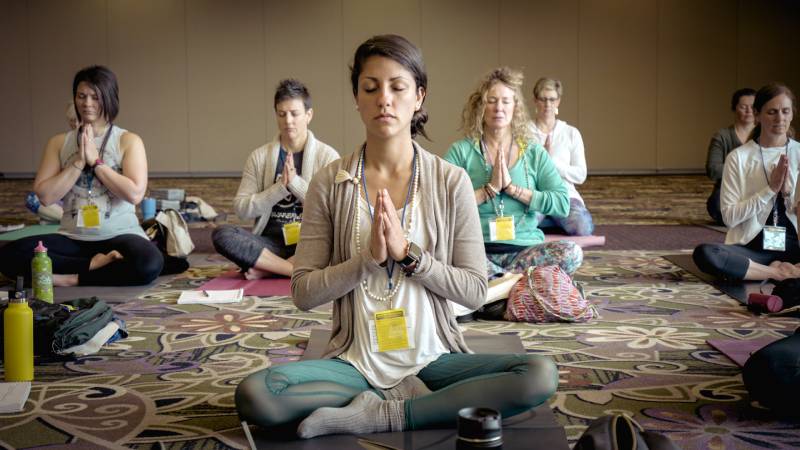
Transcendental meditation is a form of mantra meditation but is significantly different from the ancient Hindi practice described above. Also originating from India, the technique was created by Maharishi Mahesh Yogi, who famously taught The Beatles how to meditate.
In TM, the meditation teacher gives each student a specific mantra to repeat, rather than choosing one yourself. You are then expected to use the same mantra during every meditation as it is believed that the mantra given to you will help you personally reach enlightenment.
Another difference between TM and Japa Mala is that in TM, you chant the mantra in your head rather than out loud. What’s more, it is recommended to practice for 15 to 20 minutes twice a day for maximum effects.
Metta meditation
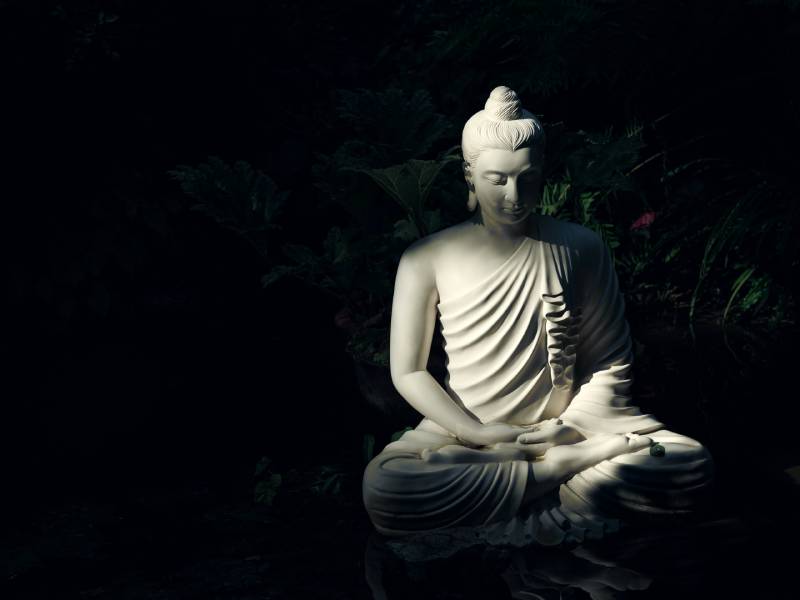
Metta meditation, also known as loving-kindness meditation, comes from Buddhism. It involves reciting loving phrases and directing positive energy towards yourself and other people. This short 6-minute guided Metta meditation is an excellent introduction to this Buddhist practice.
Metta meditation can help you heal relationships and release grudges. The meditation technique follows the Buddhist teachings that we should show love and compassion for everyone with no exceptions. So in Metta meditation, you are usually prompted to send loving kindness to someone you love and someone you are having difficulties with.
This spiritual meditation can be highly beneficial to anyone harboring anger or resentment, those who tend to judge others, and those who feel disconnected or isolated.
Metta meditation usually follows the following structure:
- Directing loving kindness toward yourself by repeating a phrase like “May I be happy. May I be well. May I be safe. May I be peaceful and at ease.”
- Directing loving kindness towards someone you love. Visualize the person in your mind’s eye as you repeat the phrase, “May you be happy. May you be well. May you be safe. May you be peaceful and at ease.”
- You can do the above step for more than one person. You can also use the phrase to send loving kindness to animals you love.
- Next, repeat the above phrase while directing loving kindness to others you know but have more neutral feelings towards. This can be neighbors, co-workers, acquaintances, or even a stranger you passed on the street earlier.
- Next, using the same phrase, “May you be happy. May you be well. May you be safe. May you be peaceful and at ease,” envision people you have difficulty with. Send end positive energy to them as you speak the words.
You can use Metta meditation to help with universal healing by adding an additional step where you send positive, loving energy to all living things. Doing this will help you to connect deeper with all living things, including plants and animals, breaking down the false belief that we are all separate beings.
Chakra meditation

Some people work with the energetic body during spiritual meditation. Chakra meditation is a typical example of this, which involves visualizing energy in particular chakras (energy centers).
The purpose of chakra meditation is to balance and align the entire chakra system. Each of the seven major chakras has unique qualities. For example, if the chakra is under or overactive, we may possess the negative qualities of it. But if it is in balance, we will feel the positive attributes of that energy center.
The state of our chakra system can determine the condition of our health and wellbeing, relationships, careers, and other aspects of our life. Therefore, working with the energetic body through chakra meditation is essential for anyone who has an innate longing to become a better version of themselves.
A typical chakra meditation practice will involve directing your attention to one chakra and visualizing the energy of the associated color. It may also include chanting affirmations or holding mantras to energize the center further.
For example, suppose something recently happened in your life to make you feel unsafe and uncentered. In that case, you can meditate on the root chakra to cultivate a sense of grounding, security, and safety. To do this, you would focus on the base of the spine, envisioning red energy here. You could also chant the affirmation “I and safe, secure, and protected.”
Aside from focusing on one energy center, you can work on all seven to align the whole system like in this chakra balance meditation.
Forgiveness meditation
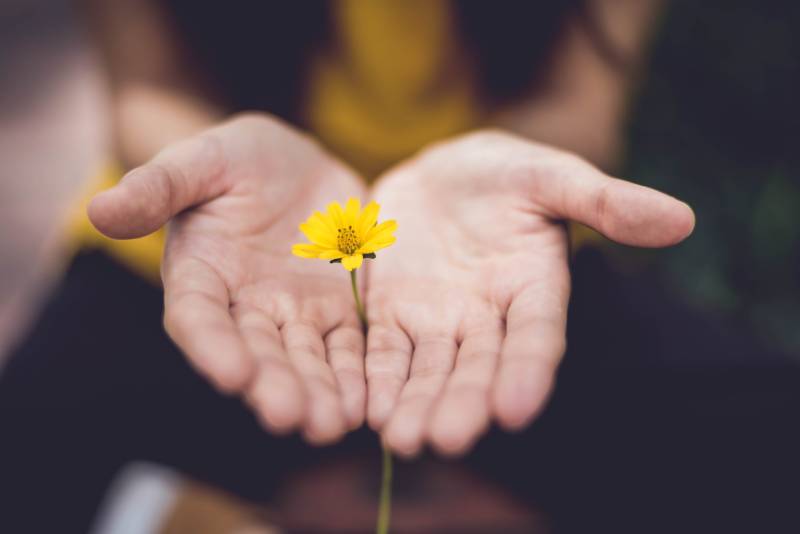
Like Metta meditation, forgiveness meditation helps heal broken relationships and let go of past trauma. In addition, forgiveness meditation enables you to move on from the past to focus on the present moment and look towards a better future.
Forgiveness meditation also allows us to forgive ourselves for our mistakes. By forgiving ourselves and others, we can walk down our spiritual path with fewer roadblocks, moving closer to spiritual enlightenment.
In this 10-minute forgiveness meditation, Buddhist monk and author Jack Kornfield instructs a short yet powerful practice that has three key sections:
- Asking for forgiveness from those you have hurt or betrayed
The first step is to acknowledge that you have hurt and harmed others. Repeating the following phrase allows you to do this.
“There are many ways I have hurt and harmed others, have betrayed or abandoned them, caused them suffering, knowingly or unknowingly, out of my pain, fear, anger, and confusion. “
Next, bring to mind the people you have hurt in the past and repeat the following words imagining you are speaking directly to them:
“I ask for your forgiveness; I ask for your forgiveness.”
- Offering forgiveness to yourself for your mistakes
Again, the first step is to admit you have harmed yourself in some way:
“There are many ways that I have hurt and harmed myself. I have betrayed or abandoned myself many times through thought, word, or deed, knowingly or unknowingly.”
Then, speak these words of forgiveness to yourself:
“For the ways I have hurt myself through action or inaction, out of fear, pain, and confusion, I now extend full and heartfelt forgiveness. I forgive myself, I forgive myself.”
- Giving forgiveness to those who have betrayed or hurt you
Picture the people that have hurt or harmed you in the past as you speak the following words:
“There are many ways that I have been harmed by others, abused or abandoned, knowingly or unknowingly, in thought, word or deed. “
Then say to yourself:
“I now remember the many ways others have hurt or harmed me, wounded me, out of fear, pain, confusion, and anger. I have carried this pain in my heart for too long. To the extent that I am ready, I offer them forgiveness. To those who have caused me harm, I offer my forgiveness; I forgive you.”
Peace spiritual meditation
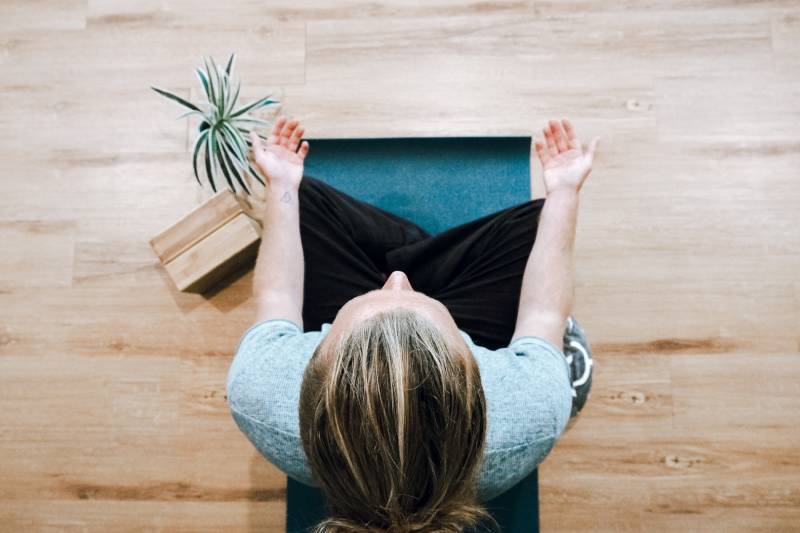
Peace spiritual meditation helps us find solace and inner stillness to better deal with challenges. Peace meditation is helpful for anyone who gets triggered easily by external situations or other people.
For example, if you get easily stressed from your children’s behavior or the actions of your colleagues or boss frustrate you, peace meditation will help. The technique allows you to live in the world without feeling so affected by things going on.
A guided spiritual meditation that cultivates peace will help you recognize your reactivity to stressors. With regular practice, you’ll be able to notice the feeling of stress and frustration in a situation before you react to it. With this conscious awareness, you can change your response by choosing peace over conflict.
Cultivating more peace is essential in spiritual practice, as the more conflict we create with others, the more war we have within ourselves. The spiritual awareness that peace meditation cultivates creates more spaciousness within us, resulting in a naturally calm composure.
This 10-minute guided meditation for inner peace will help you disconnect from the chaotic world surrounding you and reconnect with the present moment and your inner being.
What is the best spiritual meditation technique for beginners?
If you’re new to meditation and/or spirituality, you can learn the practice by following a short guided spiritual meditation. To begin with, choose ones that are 10 minutes or less. Then as you get more comfortable, you can try longer ones. This 5-minute guided meditation for beginners is ideal for first-timers and also suitable for children. Thus, you can do it as a family.
When trying meditation for the first time, there are a few things to focus on. One thing is your posture. The following video is part of a beginner’s meditation series. It breaks down the position you should sit in for meditation. It then guides you on how to breathe naturally during meditation, which is the second thing you should focus on when learning to meditate.
I recommend sticking with guided meditations for beginners until you feel more comfortable and confident. This is especially important if you are totally new to the world of spirituality. For example, if you start with a mantra or chakra meditation for the first time, you will likely feel put off or overwhelmed.
The key to starting a spiritual meditation practice is slowly easing yourself into it. So first, just focus on getting the correct posture and breathing naturally, which I will cover in more detail later in this article.
What is the best spiritual meditation technique for experienced meditators?
Let’s say you have been practicing mindfulness meditation for a while now and know how to use your breath to connect to the present moment. You’ll likely have noticed many benefits from your meditation practice and are now seeker a more profound, richer experience.
This is the perfect time to try some of the spiritual meditation techniques listed above. For example, meditations that involve visualizations like chakra meditation and Metta meditation are suited to those with previous meditation experience and teach you how to use the power of stillness in different ways.
I recommend trying them all at least a few times, as this will help you determine which one is most beneficial for your spiritual practice.
How do you feel after spiritual meditation practice?

How you feel after practicing spiritual meditation will likely differ each time. In the beginning, you might not notice any massive shifts but will probably feel a sense of calm and relaxation. You may also observe that spiritual meditation makes you feel euphoria, “a natural high.” This is due to the changes to the dopamine levels in the brain, which is the same brain chemical released every time an addict gets their next hit.
Still, the most profound benefits of spiritual meditation occur over time. As you reach higher states of consciousness and move beyond the self, you will notice differences in how you think, feel, and act.
Along with gaining more spiritual awareness, meditation rewires the neural pathways in the brain, which can change your habits and behaviors. This is why many people report a change of personality after long-term meditation.
For example, maybe before you started to meditate, you were lazy and unproductive, spending your weekends and evenings playing video games and watching Netflix. However, after six months of spiritual meditation, you find you have more motivation to do things. In addition, you may prefer to spend your free time reading or taking walks in nature rather than lounging on the couch.
This is down to the new neural pathways wired into your brain, helping you create better habits.
Tips for a successful meditation practice

If you’re new to spiritual meditations, here are a few things to focus on to experience a positive spiritual meditation practice. Or, if you’re an experienced meditator, revisiting the guidance below may help you achieve more profound spiritual benefits.
Create a calm and quiet environment
The first step to successful spiritual meditation is to do the practice in a quiet place free from distractions. So choose a room or area in your house that is quiet and where no one will disturb you. You can create a calming ambiance by dimming the lights, lighting candles or incense, using essential oils, or playing soft music on a low volume.
Make sure you are comfortable
You will likely struggle to have a successful meditation experience if you are in discomfort or pain. While the traditional meditation posture is Padmasana (Lotus Pose), this shape is complex for most people to achieve.
Instead, you should take a simple cross-legged position where your body feels loose and comfortable. Sit on a cushion to elevate your hips, taking the strain off your lower back, hips, and knees. You can also place pillows under your knees to support them.
Alternatively, sit in Virasana (Hero’s pose) with your knees together. Bring your buttocks to your heels or sit on a block with your feet outside of your hips. Furthermore, some people prefer to sit with their back against the wall. This is recommended if you slouch or have back pain. Another alternative is to sit on a chair with both feet on the ground.
Keep your spine straight
Whichever comfortable seated position you choose, ensure your spine is straight and that you don’t slouch forward during the meditation. This is important to allow for optimum prana and energy flow through the spine. So, to ensure your spine stays straight, I recommend checking in with your posture throughout the meditation to ensure it’s in the same position.
Breathe naturally
If you force your breath when you practice spiritual meditation, you will likely struggle to enter a meditative state. During meditation, release total control of your breath and allow it to be natural. You might find it helpful to take a few moments at the start of the practice to connect to your breath by taking three deep inhales through your nose, and three full exhales through your mouth.
Try meditating at different times of the day
Everyone is different, so our meditation practices should reflect our unique needs. This includes the time of day you meditate. For example, while some people find meditating first thing in the morning is best, you might find you can better access the meditation zone in the evening. Or maybe you find that you experience the most spiritual benefits when you do your practice after lunch.
To find your ideal meditation time, try doing the practice at different times of the day that fit well into your daily life. Then go with the time that suits you the best regardless of what others say.
Be patient
Finally, spiritual experiences should never be forced. Do not try to “fast track” your journey; instead, let it progress in a natural and organic manner as meditation takes practice. If you are frustrated due to lack of progress, send yourself some loving-kindness and repeat the affirmation, “I surrender to the natural course of my spiritual journey.
Final thoughts on spiritual meditation
Spiritual Meditation offers many benefits, extending far past our physical and mental well-being. Spiritual meditation practices can awaken the eternal truth of our being and help us break free from the ego’s restraints.
What’s more, anyone can practice spirituality and meditation. If you are new to it, start with a short guided spiritual meditation and follow the tips and advice in this article. And remember, there are many meditation techniques, so if you try one that does not resonate with you, don’t give up. Explore different styles until you find the one that fits.


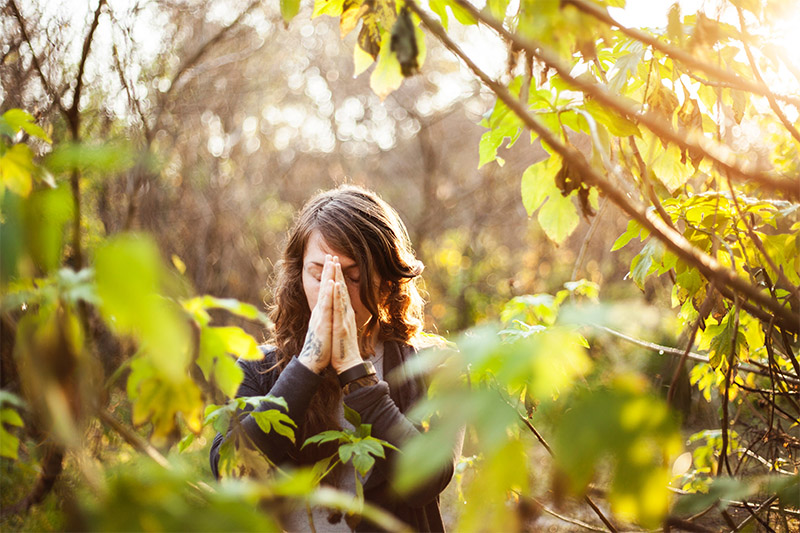
If you’re looking for a way to improve your mental health, plenty of great game apps out there can help. Whether you’re looking for something to take your mind off things or actively engage in some positive activities, these games will do the trick. So why not try and see how they work for you? If you’re mindfully aware of all the moments up until that point, you won’t get so stuck on what was or what could be – net-boss.org/mindfulness-by-julia-hanner
Find a place where you can stroll safely. Walking down a busy street is not wise. Walking around your house or backyard is a much better option. Before you begin, clear away any obstacles. With every step, consider a small point related to your topic. If it takes time to center your mind or contemplate, stand still. When you’re done with one thought, take another step and move on to the next nugget. A wide-open park is another good spot to perform walking meditations. Just try not to bump into other people. More info you will find here – net-bossorg/mindfulness-by-julia-hanner
What is the difference between meditation and prayer?